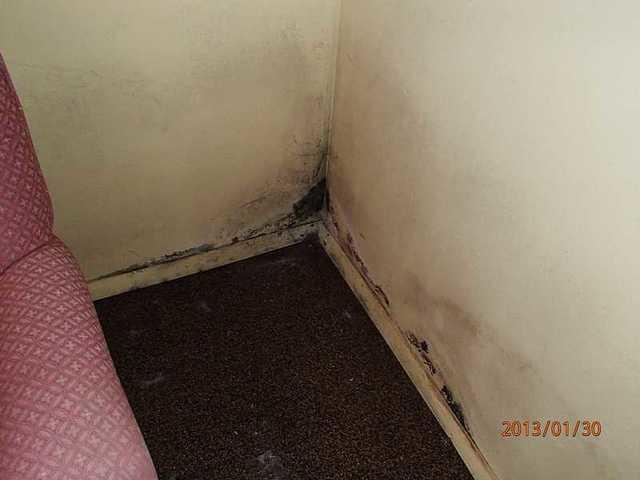
Ruined drywall in the flooded basement
Whether your basement has several inches of water in it or just a slight trickle, the drywall will soak it right up. Drywall is made up of paper, so it will allow mold to grow very quickly. The smell that most people associate with an old basement is mold growing on drywall or furniture or wood. When it gets this bad the only choice is to cut it out and trash it. It could've been avoided if a proper waterproofing system was installed earlier.

Short downspout on the back corner of the house
This downspout was pouring almost directly on the ground. When a house is built they will dig out several feet from the basement walls so that they can work. After the walls are built the extra dirt is poured back into the hole. No matter how much time has passed, that dirt is still much less compacted than the undisturbed dirt farther away from the house. What this all means is that any water draining through the looser dirt will rest against the outside of the basement wall. This is a major reason why basements leak and flood.
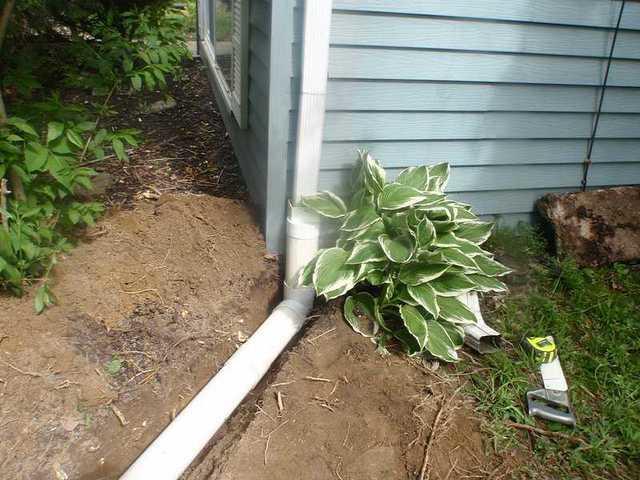
Creating a downspout extension
Getting the rainwater away from the house is the easiest way to keep it from flooding the basement. Generally, installing a downspout extension 10 feet away from the house is enough - some people choose to go farther if they are trying to reach a garden or drainage ditch or something else to hide the discharge.

Downspout extension completed
Unlike the store bought extensions, DryZone buries the downspout pipes so they are out of the way. Once the grass grows back, it will look as if nothing was ever done there. All the rain water will now be taken out over 10 feet from the foundation and won't effect the basement walls.
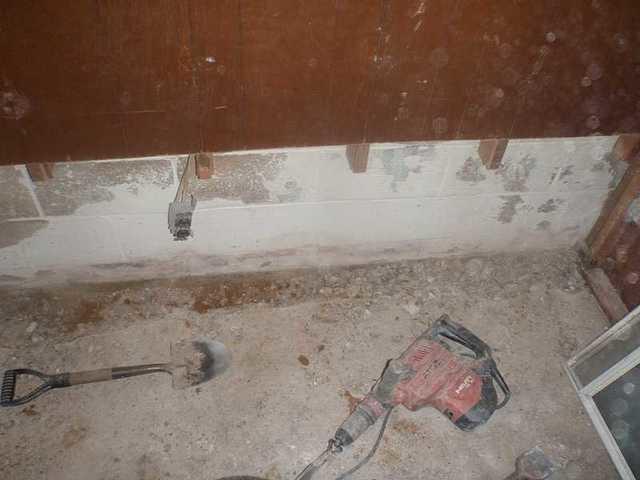
Cutting a trench to install WaterGuard
The ruined drywall is removed and the jackhammer team gets to work on cutting a trench. One of the unique things about the WaterGuard system is that it doesn't require 1-2 feet of concrete removed like other systems. The WaterGuard can usually be installed in less time as well.
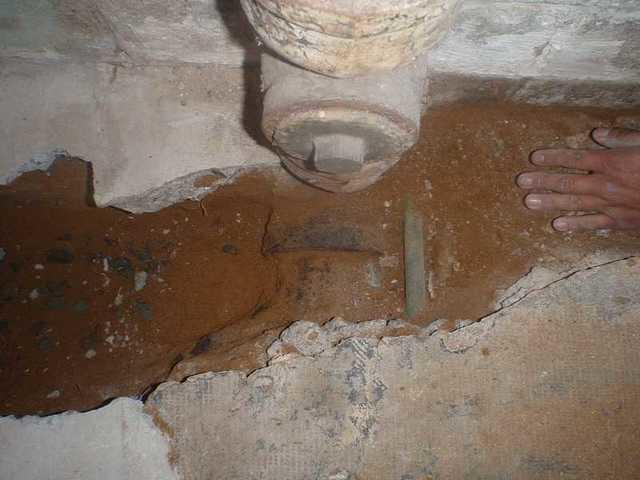
Careful around old pipes when waterproofing the basement
DryZone employees are very careful around old pipes and other obstacles. It is must better and easier to be careful than to try and fix a broken pipe.
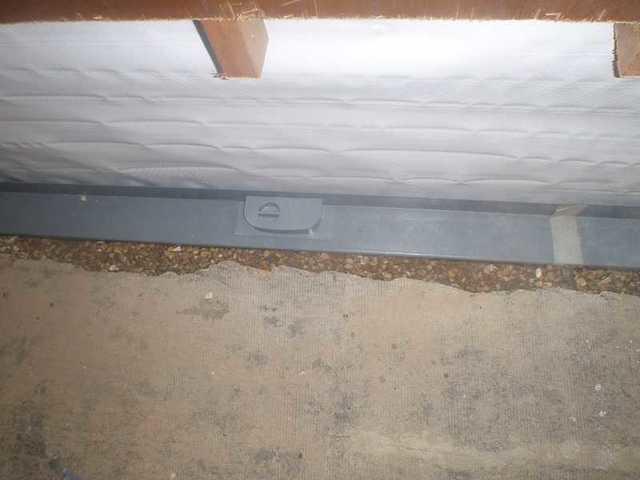
WaterGuard drainage pipe in the basement
The WaterGuard sits on top of the footer, up and out of the dirt. This keeps it cleaner than other systems and puts the actual pipe up against the wall. It is one of the reasons why the WaterGuard drainage system is far superior to other drainage pipes.

Corner inspection port on WaterGuard
One of the newest innovations to the WaterGuard system is the corner inspection port. In years past there was just a 90 degree piece or solid pipe. Someone in Research and Development came up with the idea of adding an inspection port on the corner. This makes it so the pipe can be flushed in both directions if it gets dirt in it. What a great idea to improve an already fantastic basement waterproofing system.
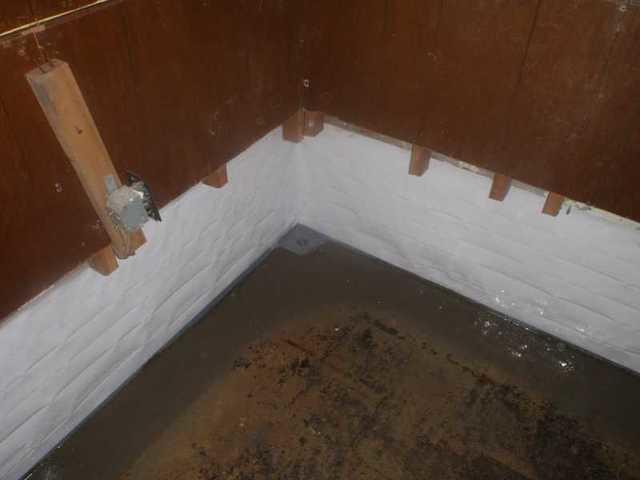
Replacing the concrete floor
Once all the sections of pipe are in place, the crew installs new concrete. When it dries the homeowner will be able to use the entire floor again. Many other systems take up a foot or so of floor and nothing can go up against the wall.
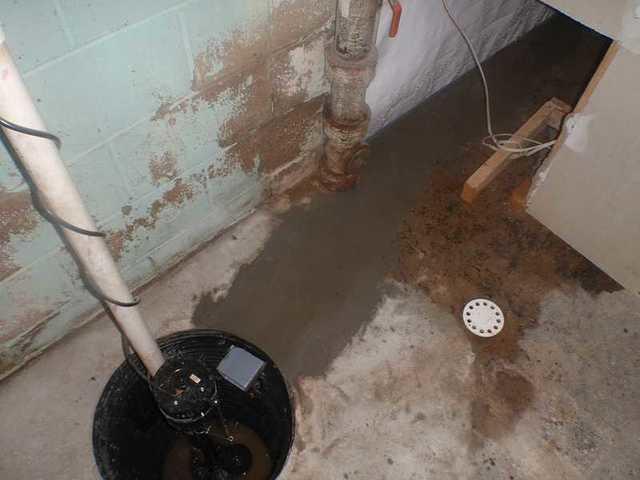
Draining the water off to the sump pump
One of the most common compliments that homeowners give the DryZone inspectors and crew is that they work with the owners and don't just force them into choosing a certain product or service. The homeowner was happy with the existing sump pump and the DryZone team was able to use it in tandem with our WaterGuard drainage system. Other companies were trying to force a new sump pump and much more expensive solution on the homeowner. They chose DryZone for the simple fact that they were far more comfortable with our customer service.
